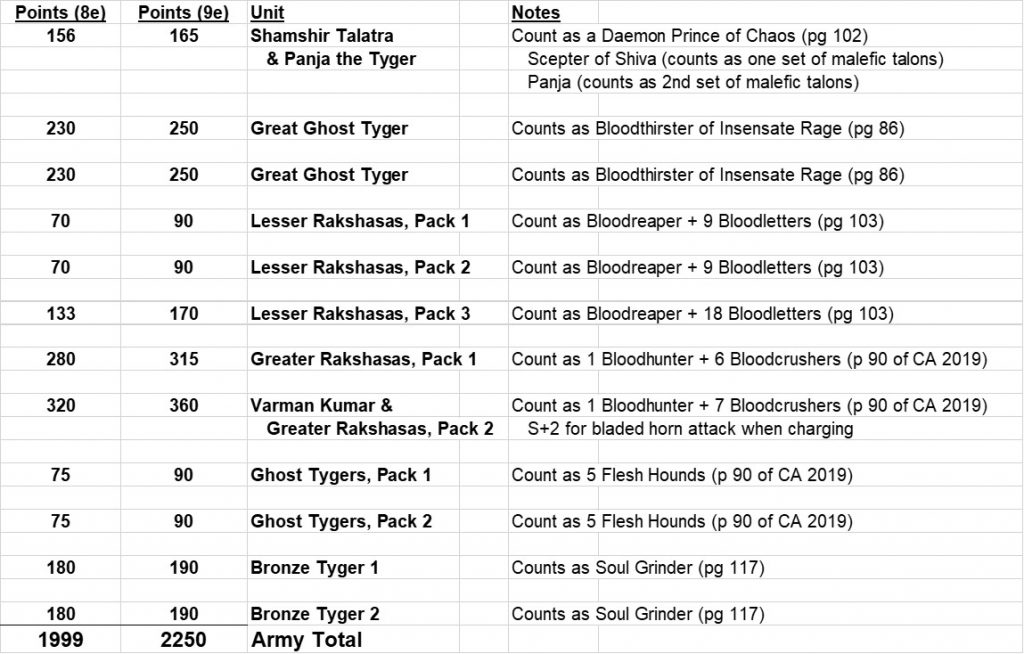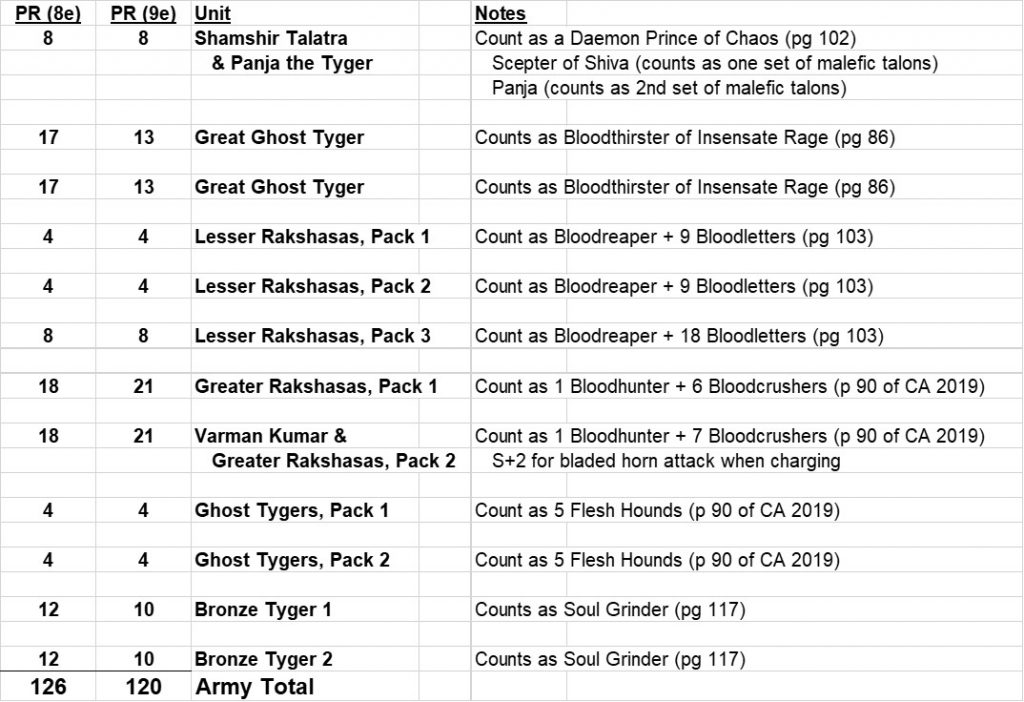THIS VINTAGE JUNGLE POST first appeared in 2020. Because it was popular with visitors, I am sharing it again now. Some information may have changed since it was originally posted.
UNLESS SOMEONE INSISTS, I’m not going to use Points Values in 40K ever again.
Like probably the vast majority of you–barring those folks who started playing during the recently-departed 8th Edition days–I’ve always used Points Values when making my army lists. For many years, I’ve set my lists at 2,000 points, which has meant splitting 5 out of my 6 armies into separate lists so that I could make sure to use every figure and vehicle I own. I’ve spent hours configuring them just so, and carefully calculating each point.
No more of that. From now on, I’m just using Power Ratings, even though I never thought much of them before.
So, why no more Points Values for me? Several reasons.
Too many updates. I was okay with points for an army changing from codex to codex, but the Chapter Approved 2017 supplement started a practice of Games Workshop adjusting Points Values every year. This has continued to the current day, and, of course, requires you to buy a copy of CA (or–ahem!–acquire it online).
Too much hassle. As mentioned, I have one army–Chaos Daemons– that uses one list, and five other armies with multiple lists: Space Marines with 6 lists; Drukhari with 3; Tyranids with 3; Necrons with 2; and Adeptus Mechanicus with 2.
That’s 17 lists to go through, adjust, and recalculate every time GW revises their Points Values, and if a change is big enough (like the most recent one, for 9th Edition), then I’d have to swap out units to stay at or under my self-imposed 2,000 point limit.
The Great 9e Points Hike. About the latest points increase: I was stunned to find out just how large it is. As I went through my lists, adding in the new Points Values, I was expecting a little bump, but not the extra 200+ points I wound up with for each. From the Excel spreadsheet I use to make army lists, here’s the “before and after” for my Chaos Daemons:

I’m a Narrative Guy. I used to be a competitive player, but I did my last tournament almost 20 years ago. There’s nothing wrong with playing competitively, but it’s not my thing anymore.
I prefer much more casual games that link into a story, so, there’s no big reason for me to get down in the weeds with Points Values, the way Matched Play calls for.
I can keep my lists as they are. I worked really hard on each of those 17 lists: all of them are built around a theme. Adjusting them to account for the new, much higher point values would not only be a major PITA, it might also muck them up. Forget it.
Power Ratings are easier. There’s no futzing about with what sort of heavy weapon a Tactical Squad is packing, or whether they have a flamer or a plasma gun, or whether their Sergeant has a power fist or a power sword, and then looking up how much those cost, and making sure they’re accounted for properly.
There’s no adding up a lot of triple-digit numbers and then trying to make sure that everything comes in at, just under, or just over a certain point limit. Instead, you just jot down the Power Rating and move on.
Considerations
None of this business of Points Values vis-a-vis Power Ratings is new to the game–Power Ratings debuted with 8th Edition in 2017–but it is to me. I had never seriously considered using them before because 1) I was accustomed to points; 2) I had more free time to fiddle with my lists; and 3) I didn’t trust them to maintain a fair game.
I might not be a “competitive player” in the sense that I go to tournaments, but that doesn’t mean I don’t play to win, or that I want to be taken advantage of.
The major stumbling block for me was that for the most part, a unit’s Power Rating only changes based on size, not on however many bells, horns, and whistles that its wargear options allow. There is a difference between a Devastator Squad armed with four heavy bolters, and one with four lascannons, and Points Values account for that.
But having played several games with my neighbors “the Becker Boys,” who only use Power Ratings, I haven’t noticed any big, game-changing effects (even that one time when I had 100+ fewer points than Dylan). For casual games, Power Ratings seems to work out okay.
So, with that, and after contemplating all the work that I’d have to do to keep using Points Values for my 17 lists, I’ve decided to go all-in on Power Ratings.
Using the 2020 updated Power Ratings, my Chaos Daemons actually went down in Power Rating, from 126 to 120 (see below). A pleasant surprise, and I hope to have more, while spending less time crunching numbers.

A public “thank you” to my pal Gareth Topping (a long-time gamer and an author of excellent horror fiction) for opening my eyes to the simplicity of Power Ratings.
Kenton Kilgore writes killer SF/F for young adults and adults who are still young. The Fighting Tigers of Veda appear in his latest novel, Stray Cats, which you can find here.

Check him out on kentonkilgore.com, and follow Kenton on Facebook for frequent posts on sci-fi, fantasy, and other speculative fiction. You can also catch him on Instagram, and find his books in softcover and for Kindle on Amazon.
